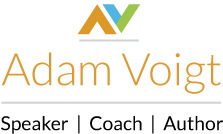There’s some nonsense in the learning and development space about learning styles with as many as seven of them up for grabs. Apparently it’s useful to determine whether you’re visual (spatial) , aural (auditory-musical), verbal (linguistic), physical (kinesthetic), logical (mathematical), social (interpersonal) or solitary (intrapersonal) learner. Let me tell you right now, it’s not useful!
Pigeon holing yourself as a particular type of learner and then manipulating any task or content in the attempt to fit it to your style is a narrow and compromised way to learn. Can you imagine trying to learn how to ride a bike but being limited in your attempts because “I’m sorry, I need to learn this skill linguistically.”?
Instead, how about we embrace that there are many ways to learn and that some things will require us to learn in ways outside our favourites.
The joy of this more agile approach to learning is that we embrace all learning types and build our capacity in each. Importantly, we also then resist the rejection of learning methods with incredible potential benefits.
For instance, let’s examine “trial and error” as a learning methodology. In an increasingly risk averse corporate environment, and even community, we’re doing ourselves a grave disservice by eliminating the opportunity to try, to fail and to learn deeply from the discomfort of the self-generated consequences.
Returning again to our childhood, I remember being told not to touch the stove (verbal – linguistic learning). I remember science classes (social – interpersonal) about fire and I remember seeing horrible pictures of people who had been burned (visual – spatial). Guess how I learned not to touch the stove in the kitchen … by touching it, that’s how!
We need to build working and learning environs where people are encouraged to genuinely risk and to learn from the immense range of potential positive and negative outcomes that risk generates.
When was the last time you encouraged your people to touch the stove?


